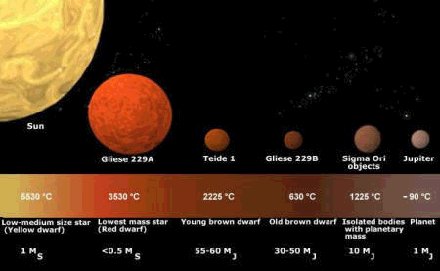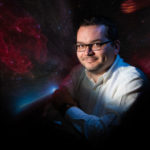Researchers from the University of Edinburgh (UK) recently suggested that life might evolve in the Earth-like atmosphere that can exist around brown dwarfs (aka failed stars). And scientists continue to search for signs of life on Mars, moons, asteroids, and other points beyond Earth. We spoke with Daniel Apai, Assistant Professor of Astronomy and Planetary Sciences at the University of Arizona and Principal Investigator of the NASA-funded Earths in Other Solar Systems (EOS) Team. Here’s part two of our interview.
RECURSOR: How feasible is it that life could survive when not rooted closely to a planetary surface?
APAI: Keeping organisms alive in the atmosphere without having a habitable planetary surface is very difficult. Temperatures and composition can vary greatly in the atmospheres. And with the powerful winds that are likely to be present in all atmospheres, it would be very difficult for organisms to control their location enough to avoid very high or very low temperatures.

Planet/star comparison chart via www.darkstar1.co.uk/ds3.htm
What sci-fi films or books do you know of that address life evolving in non-planet locations? Do they do a good job of imagining what that life would be like?
The famous astrophysicist Fred Hoyle wrote a book (The Black Cloud) about the possibility of a living organism not tied to a planet. In that book, a dense interstellar cloud reaches self-consciousness. While this is a far-fetched idea and we do not have any evidence for such objects existing, Hoyle’s book is definitely interesting and attempts to be scientifically accurate about the physical conditions that may be present.
I think it is very difficult to imagine that life could emerge in a non-planet environment. If there is presently non-planet life, it is probably more likely that it evolved on planets and then moved on to inhabit non-planet environments. Asteroids and comets could be unlikely, but perhaps not impossible locations.
 Daniel Apai is an astrophysicist specializing in studies of the formation and atmospheres of extrasolar planets with the long-term goal of identifying planetary systems capable of supporting life. The author of over ninety refereed research papers, he has also edited and consulted on multiple books. Apai is principle investigator of major programs on the Hubble and Spitzer Space Telescopes, and is currently serving as Assistant Professor in the Department of Astronomy and Department of Planetary Sciences at the University of Arizona. He can be reached through his blog, distantearths.com.
Daniel Apai is an astrophysicist specializing in studies of the formation and atmospheres of extrasolar planets with the long-term goal of identifying planetary systems capable of supporting life. The author of over ninety refereed research papers, he has also edited and consulted on multiple books. Apai is principle investigator of major programs on the Hubble and Spitzer Space Telescopes, and is currently serving as Assistant Professor in the Department of Astronomy and Department of Planetary Sciences at the University of Arizona. He can be reached through his blog, distantearths.com.